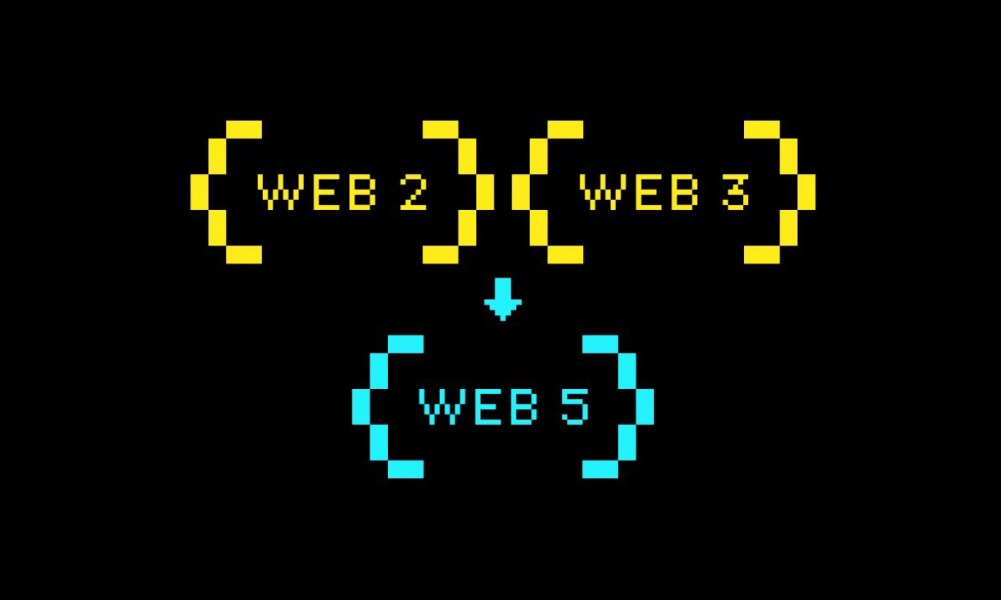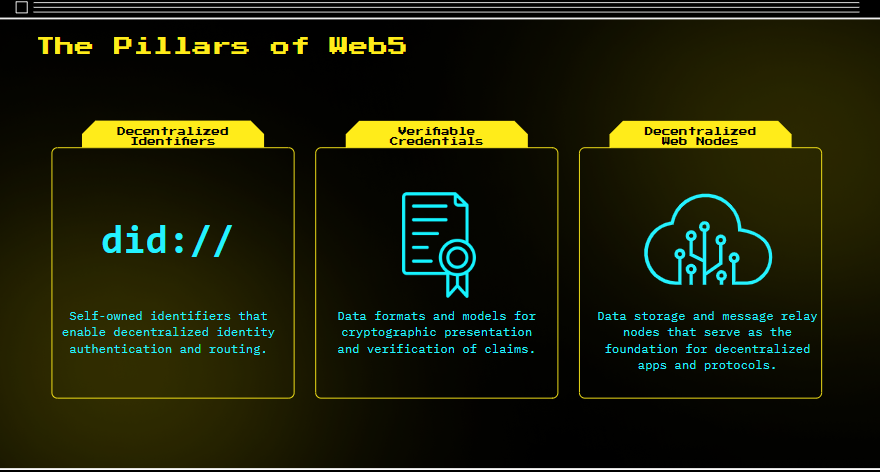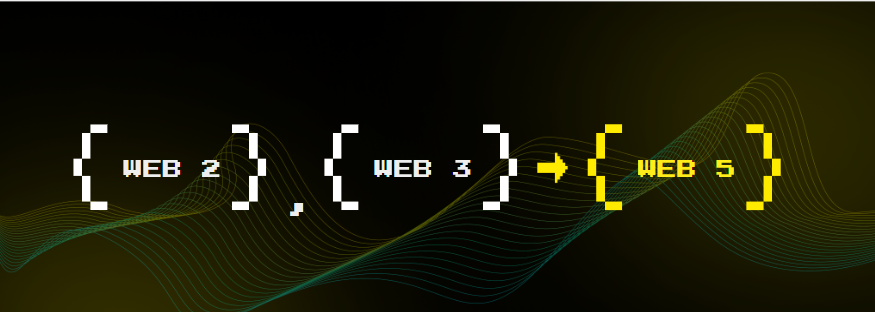Web5: A Decentralized Web Platform
 Samuel Damilola Akinmarin
Samuel Damilola Akinmarin
Web5 strives for a decentralized internet, granting users enhanced control over their data and identity. The Bitcoin blockchain utilizes decentralized web nodes for the storage and management of personal information. In contrast to Web3, Web5 avoids reliance on tokens, smart contracts, or centralized providers. Its core focus centers on using Bitcoin as a foundational layer for decentralized identity and data sovereignty.
What is Web5?
On June 10, 2022, Jack Dorsey, six months after asserting that internet users do not own Web3, provided an update on his team's endeavors. In a follow-up tweet, he retweeted TBD’s announcement with a comment expressing pride in his team's work, stating that their contribution to the internet would likely be the most significant. The tweet included the hashtag #web5 and a nod to the demise of Web3 venture capitalists. TBD operates under Block, Inc., Jack's conglomerate previously known as Square, Inc.
Web5 isn't merely a successor to Web3; it represents a groundbreaking concept that harmonizes the strengths of both Web2 and Web3. It combines the user-centric approach of Web2 with the decentralized ideals of Web3, resulting in a platform that gives users control over their data and identity. Despite the seemingly simple mathematical nomenclature, Web5, as envisioned by Jack Dorsey and TBD, is a profound vision for a web where users play an active role, leveraging frameworks like Web 3.0 for enhanced control and decentralization. Notably, Web5 addresses the shortcomings of its predecessors, aiming to integrate the ethical attributes of Web 2.0 with the decentralization principles of Web3. It emerges as a response to Jack Dorsey's critique of Web3's execution, which he deemed insincere and merely a centralized entity under a different label
THE PILLARS OF WEB5

Web5 transcends the rhetoric of "decentralization" by actively focusing on implementation. The development team is dedicated to constructing a robust foundation, ensuring that this new phase of the web is genuinely decentralized rather than a mere marketing strategy. Jack Dorsey's commitment to returning data control to individuals is evident.
This commitment became even more apparent when Jack responded to a follower's question about who would be in control of Web5. In contrast to the scientists guiding Web 1.0, the techno-entrepreneurs leading Web 2.0, and the venture capitalists aspiring to dominate Web 3.0, Jack emphatically stated, "the people." The realization of this ultra-decentralized web, however, remains to be seen.
Presently, Web5 and Web3 diverge significantly in terms of architecture and backend operations. Despite Web5 being in its early stages, it's crucial to examine the frameworks and protocols underlying its development and compare them to Web3. The analysis can be structured around Web5's four foundational pillars: Decentralized Identifiers (DIDs), Verifiable Credentials (VCs), Decentralized Web Nodes (DWNs), and Decentralized Web Apps (DWAs). Each contributes to its vision of a decentralized and user-centric Internet:
Decentralized Identifiers (DIDs): DIDs serve as globally unique identifiers, giving users control over their identities. Unlike centralized third-party identifiers such as emails and phone numbers, DIDs empower users to manage how their identities and personal information are utilized, shared, and accessed. In Web5, a user's DID is linked to their data through Decentralized Web Nodes (DWNs), ensuring that data is disconnected from centralized storage. This approach grants users complete control over their data, allowing developers to focus on enhancing user experiences without concerns about storage. Public blockchains facilitate the connection between DIDs, DWNs, and other Web5 frameworks.
Verifiable Credentials (VCs): VCs are secure, tamper-evident digital credentials that cryptographically verify a user's identity. These credentials, similar to traditional forms such as national IDs or driver's licenses, provide a trustworthy means of establishing a user's credibility. Connected to a user's decentralized identifier, VCs contribute to confirming the authenticity of a user's digital identity. In comparison, traditional platforms like Web 2.0 often require users to undergo ID verification using third-party identifiers, with the provided legal identification serving as a form of Verifiable Credential.
Decentralized Web Nodes (DWNs): DWNs are integral to the fully decentralized web, where nodes collaborate to host and share web content without central authority. In Web5, DWNs form distributed networks allowing users to host and serve content via peer-to-peer (P2P) protocols. These nodes, acting as data storage and message-relaying mechanisms, enable communication, sharing, and identification among Web5 users. DWNs function as highly connected networks of nodes associated with users through their DIDs, granting users control over their data and its accessibility to apps.
Decentralized Web Apps (DWAs): DWAs, akin to decentralized progressive web apps, represent a user-friendly interface for decentralized interactions. While traditional progressive web apps (PWAs) rely on centralized servers, DWAs operate with Decentralized Web Nodes (DWNs). This decentralized approach ensures that users maintain control over their data, granting permission to apps for access. DWAs, functioning as a hybrid between websites and mobile applications, offer features comparable to native apps but operate within the decentralized framework of Web5.
Benefits of Web5
It gives users more control over their data and identity, without relying on third parties or intermediaries. Users can decide how to store, share, and monetize their data, as well as verify their credentials and reputation. This enhances user privacy, security, and sovereignty.
It uses Bitcoin as the base layer for decentralized identity and data management, leveraging its security, immutability, and global adoption. Bitcoin is the most robust and decentralized blockchain, and it does not require tokens, smart contracts, or other complex features that Web3 relies on.
It enables more enjoyable and emotional user experiences, by allowing web applications to interact with users in a more human and personalized way. Web5 applications can use emotional intelligence, natural language processing, and real-time communication to create more engaging and immersive content and services.
How Is Web5 Different From Web 2.0 and Web3?

The core difference between Web5 and other iterations of the Web is that elements like decentralized identities and Web nodes enable users to take ownership of their data independent of a third party.
| Aspect | Web5 | Web 2.0 | Web3 |
| Ownership of Data | Users have ownership of the data | Data controlled by service providers | Data controlled by service providers |
| Decentralization | Yes | No | Partially |
| User Control | Users have more control | Limited control | Limited control |
| Authentication | Decentralized identifiers used | Service provider authentication | Service provider authentication |
| Data Storage | User-owned data nodes | Service provider’s servers | Service provider’s servers |
| Dependency on Third Party | Independent of third parties | Dependent on third parties | Dependent on third parties |
| Privacy and Security | Enhanced privacy and security | Limited privacy and security | Partial privacy an |
Conclusion
Web5 stands at the forefront of the World Wide Web's evolution, promising significant advancements in online experiences. Though still in development, the vision and potential of Web5 are compelling, emphasizing user empowerment, control over identity and data, emotional intelligence, and improved communication in e-commerce. By leveraging the security provided by blockchain technology, Web5 seeks to revolutionize the way we engage with the digital realm.
However, it is essential to recognize that the success of Web5 hinges on widespread adoption and its ability to overcome developmental challenges. As we eagerly anticipate the realization of Web5, we envision a new era of the web characterized by user-centricity, enhanced privacy, and seamless interactions. The transformative impact of Web5 has the potential to reshape how we navigate and engage with the digital world.
References
Subscribe to my newsletter
Read articles from Samuel Damilola Akinmarin directly inside your inbox. Subscribe to the newsletter, and don't miss out.
Written by

Samuel Damilola Akinmarin
Samuel Damilola Akinmarin
I'm a Software Engineer, Meteorologist, Graphic design, Content Creator, and Community Engineer. I'm passionate about sharing knowledge, documentation, web engineering, Jamstack, headless commerce, and others. I create technical content (on my YouTube), build useful open-source projects, speak at some meetups/conferences, build technical communities... Here's a quick summary about me: 😊 Pronouns: He/him 💡 Fun fact: I'm currently studying at AltSchool Africa School of Software Engineering Class of 2022. 🌱 I’m currently learning JavaScript, Reactjs, and Python. 😊 I’m looking for help with open source projects, hackathons, internships, and entry-level opportunities. 💼 Job interests: Software Engineer, Front Engineer, or UI Engineer (Intern or Junior level). 📫 You can view my resume and contact me by emailing Youngsamsy.1@gmail.com.